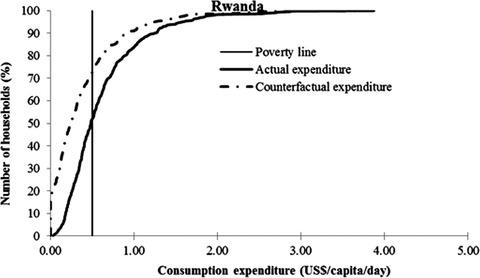当前位置:
X-MOL 学术
›
Food Energy Secur.
›
论文详情
Our official English website, www.x-mol.net, welcomes your feedback! (Note: you will need to create a separate account there.)
Are farmers using cropping system intensification technologies experiencing poverty reduction in the Great Lakes Region of Africa?
Food and Energy Security ( IF 5 ) Pub Date : 2020-05-12 , DOI: 10.1002/fes3.205 Paul Martin Dontsop Nguezet 1 , John Herbert Ainembabazi 2 , Arega Alene 3 , Tahirou Abdulaye 4 , Shiferaw Feleke 5 , Generose Nziguheba 6 , Makaiko Khonje 3 , Djana Mignouna 4 , Christopher Okafor 7 , Emmanuel Njukwe 8 , Piet Van Asten 9 , Sylvain Mapatano 10 , Bernard Vanlauwe 6 , Victor Manyong 5
Food and Energy Security ( IF 5 ) Pub Date : 2020-05-12 , DOI: 10.1002/fes3.205 Paul Martin Dontsop Nguezet 1 , John Herbert Ainembabazi 2 , Arega Alene 3 , Tahirou Abdulaye 4 , Shiferaw Feleke 5 , Generose Nziguheba 6 , Makaiko Khonje 3 , Djana Mignouna 4 , Christopher Okafor 7 , Emmanuel Njukwe 8 , Piet Van Asten 9 , Sylvain Mapatano 10 , Bernard Vanlauwe 6 , Victor Manyong 5
Affiliation

|
This study evaluated the poverty reduction impact of the adoption of cropping system intensification (CSI) technologies using the endogenous switching regression (ESR) model in the Great Lakes region of Africa that comprises Burundi, eastern DR Congo, and Rwanda. The study data came from a household survey of 1,495 sample households interviewed between October and December 2014. Results indicated that the adoption of the CSI technologies had increased crop yield, crop income, and per capita consumption expenditure in the region, resulting in poverty reduction. Among the three countries, eastern DR Congo witnessed the highest poverty reduction (13% points) followed by Rwanda (6% points) and Burundi (2% points). Considering the adoption rate and size of the target population in each country at baseline, an estimated 180 thousand poor individuals had escaped poverty due to the adoption of the CSI technologies. This presents important evidence in favor of promoting CSI technologies as part of poverty reduction strategy. Given the large population size that remains poor even after adoption, we suggest that research‐based poverty reduction strategies such as the CSI technologies should be complemented with development interventions.
中文翻译:

在非洲大湖地区,农民是否正在使用种植系统集约化技术来减少贫困?
这项研究使用内生转换回归(ESR)模型在包括布隆迪,刚果民主共和国东部和卢旺达在内的非洲大湖地区,评估了采用耕种系统集约化(CSI)技术对减贫的影响。研究数据来自2014年10月至2014年12月对1,495个样本家庭进行的家庭调查。结果表明,CSI技术的采用增加了该地区的作物产量,作物收入和人均消费支出,从而减少了贫困。在这三个国家中,刚果民主共和国东部的减贫率最高(13%),其次是卢旺达(6%)和布隆迪(2%)。考虑到基线时每个国家的目标人口的采用率和人数,由于采用了CSI技术,估计有18万贫困人口摆脱了贫困。这提供了支持推广CSI技术作为减贫战略一部分的重要证据。鉴于即使采用后人口仍然庞大,我们建议以研究为基础的减贫战略(如CSI技术)应辅之以发展干预措施。
更新日期:2020-05-12
中文翻译:

在非洲大湖地区,农民是否正在使用种植系统集约化技术来减少贫困?
这项研究使用内生转换回归(ESR)模型在包括布隆迪,刚果民主共和国东部和卢旺达在内的非洲大湖地区,评估了采用耕种系统集约化(CSI)技术对减贫的影响。研究数据来自2014年10月至2014年12月对1,495个样本家庭进行的家庭调查。结果表明,CSI技术的采用增加了该地区的作物产量,作物收入和人均消费支出,从而减少了贫困。在这三个国家中,刚果民主共和国东部的减贫率最高(13%),其次是卢旺达(6%)和布隆迪(2%)。考虑到基线时每个国家的目标人口的采用率和人数,由于采用了CSI技术,估计有18万贫困人口摆脱了贫困。这提供了支持推广CSI技术作为减贫战略一部分的重要证据。鉴于即使采用后人口仍然庞大,我们建议以研究为基础的减贫战略(如CSI技术)应辅之以发展干预措施。



























 京公网安备 11010802027423号
京公网安备 11010802027423号